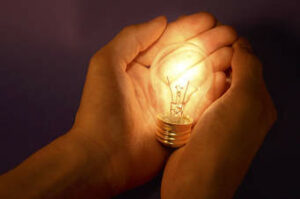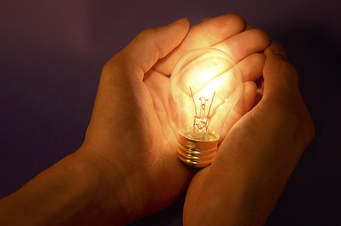
Our lives are being filled with so much activity that we no longer have time to think creatively. The old adage that “busyness is not effectiveness” never applied more than it does today – when we are working longer and faster, and multitasking more frequently.
Our tendency is to fill every minute with activity. We seem to have a fear of empty space. Just as an emptied drawer doesn’t stay empty long, so freed-up time doesn’t stay free long. If there’s a pause in a conversation, we’re quick to fill it. If we ask a question and there’s no immediate response, we answer it ourselves. If we’re waiting in a line-up, we grab for our smartphone to check email or send a quick text message.
It’s difficult to make time for creativity in this digital age of speed. Electronic tablets, smart phones and other PDAs are efficient beyond imagination. Unfortunately it’s the imagination that is the key to successful ventures. And smart phones are just plain stupid when it comes to creativity. I sometimes think we would be better off with more doodle pads and fewer keypads.
I’m not knocking technology. It has been the greatest time saver of all time, and it makes our earlier efforts at efficiency seem pathetic. But we have to control it. Too much of a good thing is not a good thing. Don’t be afraid to turn off your smartphone, ignore email and engage voice mail for an hour or more during the day. History has proven that we can survive for at least 60 minutes without the use of technology. The key is to make use of the virtual world while still feeling great, having healthy relationships, and remaining connected to the here and now.
Most of the latest books on creativity, such as Your Creative Brain (2010) and Imagine: How creativity works (2012) agree that we are all creative and every day we perform hundreds of creative acts. And everyone is able to train their creative brain.
If that’s true, why do so many people struggle with coming up with novel ways to market, write, promote, produce and so on? I would suggest that one of the reasons is that we don’t have time to be creative. You don’t get your most creative ideas while rushing to a meeting or racing to get to the grocery store before it closes. Ideas come when you’re relaxing in a hot tub, lying on the beach or strolling in a park.
When a NY Times reporter interviewed several winners of the MacArthur “genius” grants, most said they kept cell phones and iPads turned off when in transit so they could use the downtime for thinking. That’s what most people are lacking. Research shows that people think more creatively when they are calm, unhurried, and free from stress. Time pressures lead to tunnel vision.
Michael Gebb, author of How to Think Like Leonardo daVinci, asked the question “Where are you when you get your best ideas?” The answer was seldom “At work.” It was usually “while walking, taking a shower, listening to music” or some other non-work-related activity. Making work your whole life is detrimental to your work.
People usually get their best ideas, not when they are busy working, but while relaxing at home, on vacation or just before dozing off at night. You are not doing yourself a favor by skipping lunches or vacations or continually multitasking. Make time for creative thinking by going for long walks, taking regular breaks, having leisurely lunches and keeping normal hours. Don’t feel guilty if you find yourself staring at the sky or watching steam rise from your coffee. That’s when you might get your best ideas.
And it’s good for your health as well.


Recent Comments